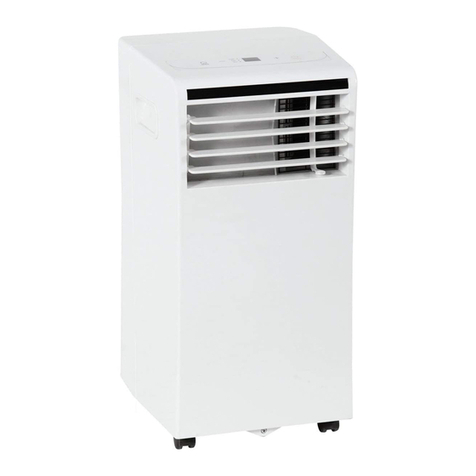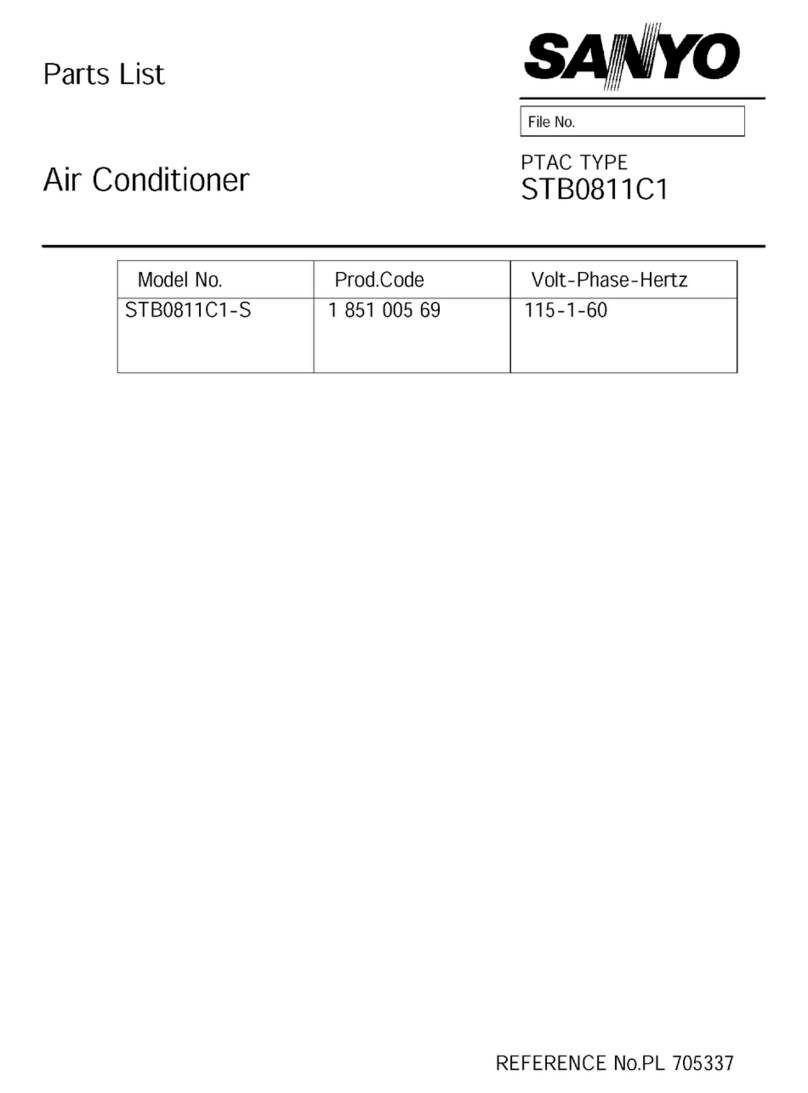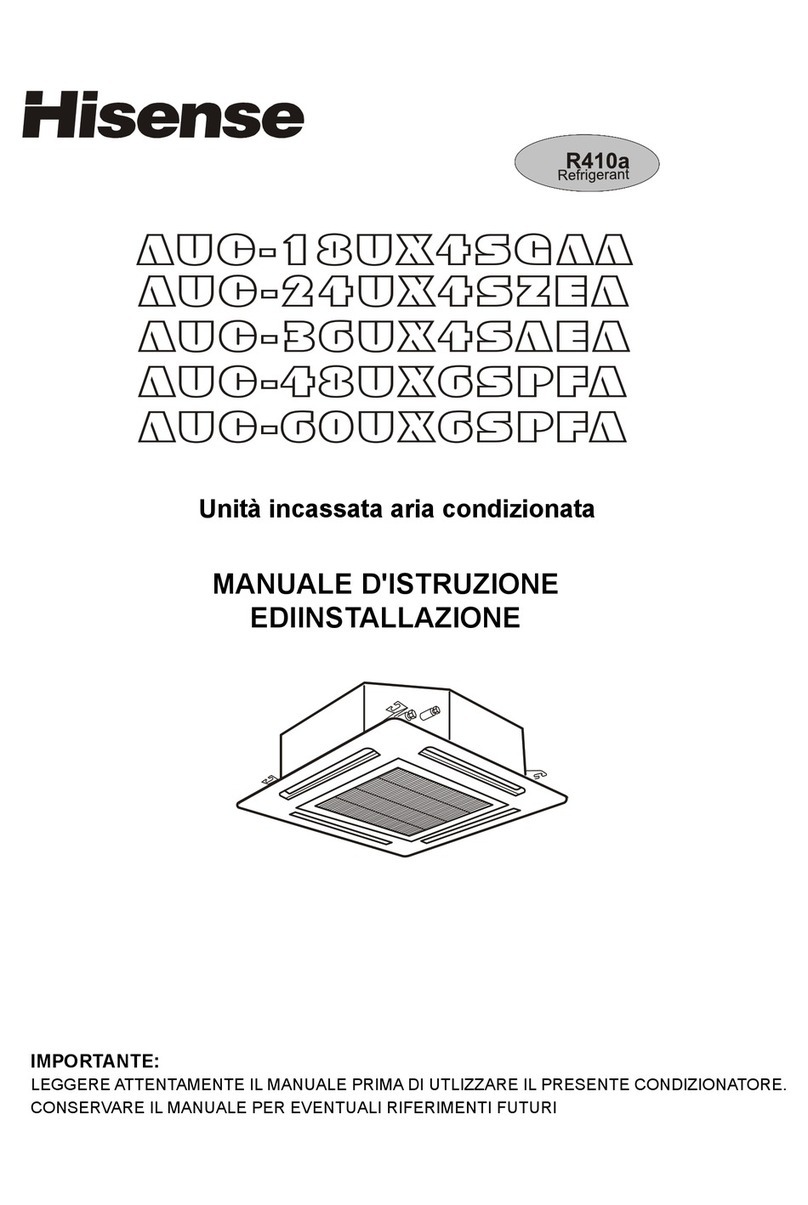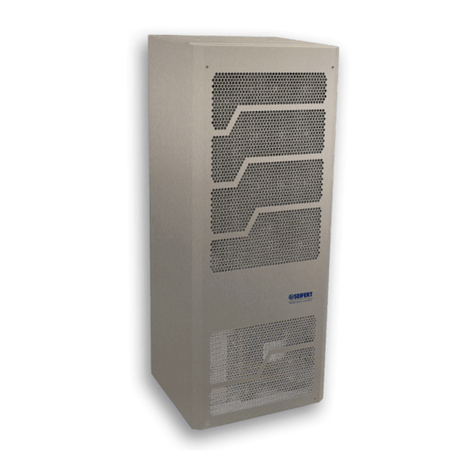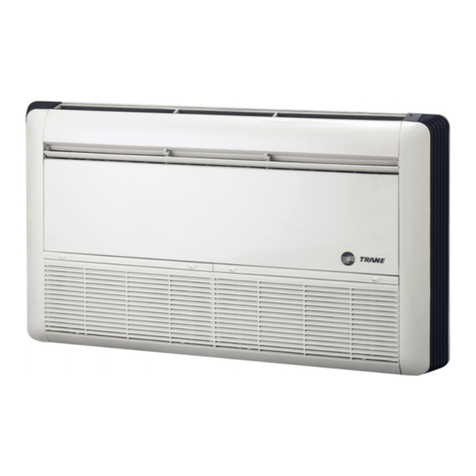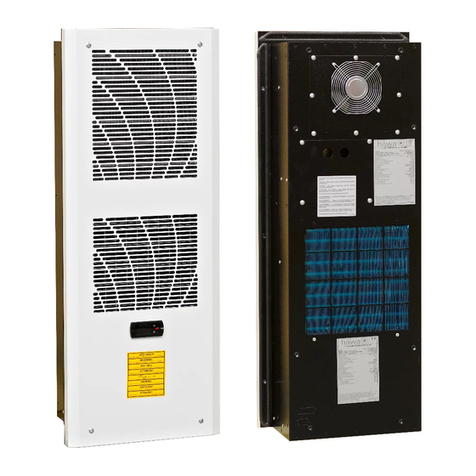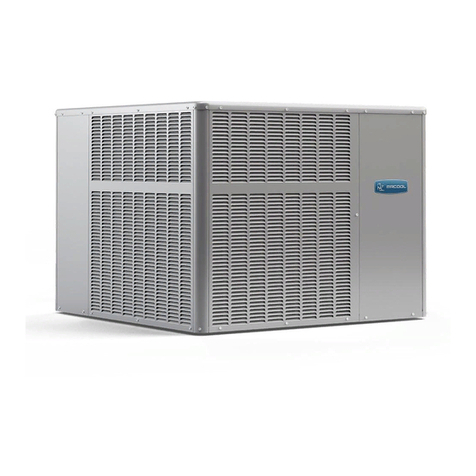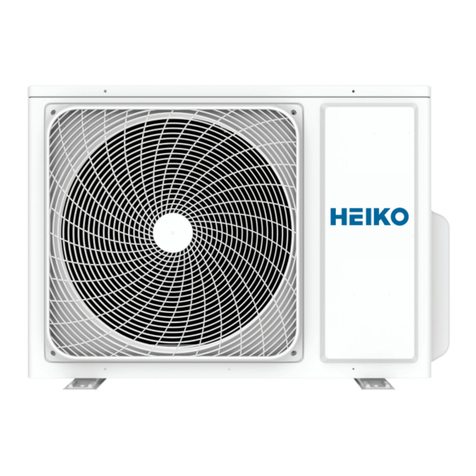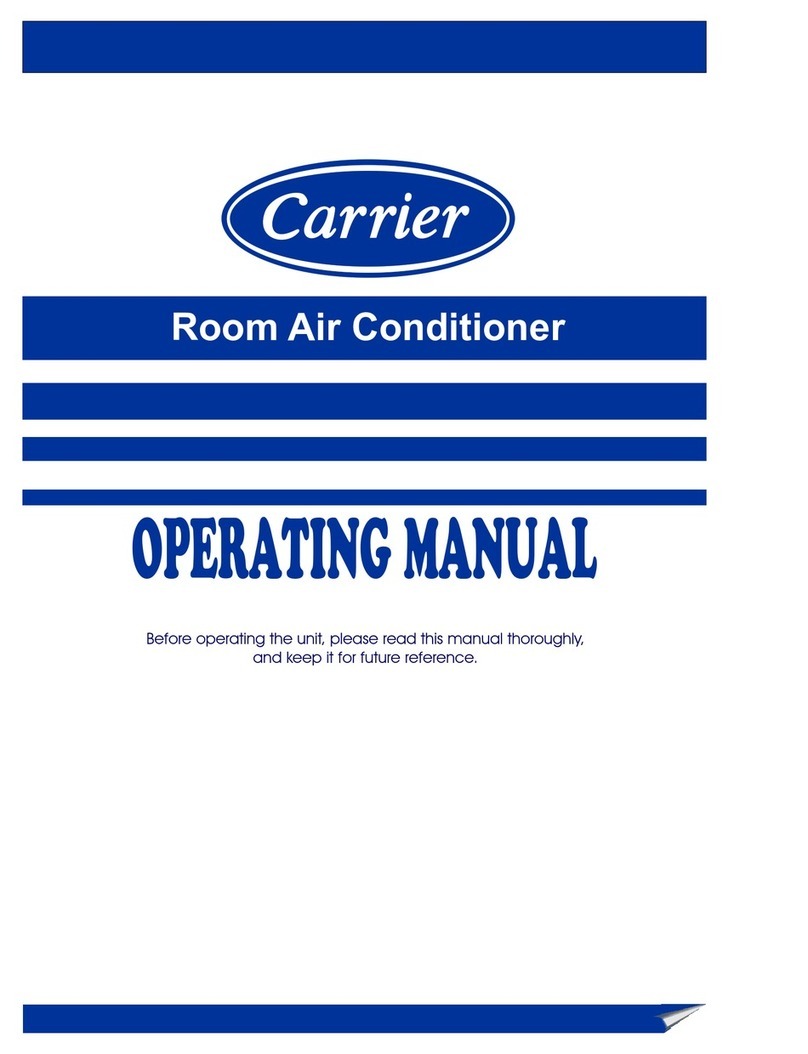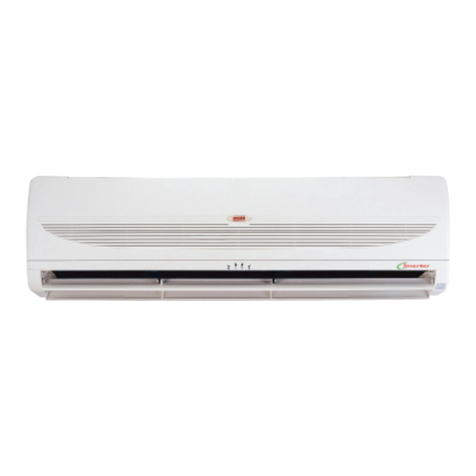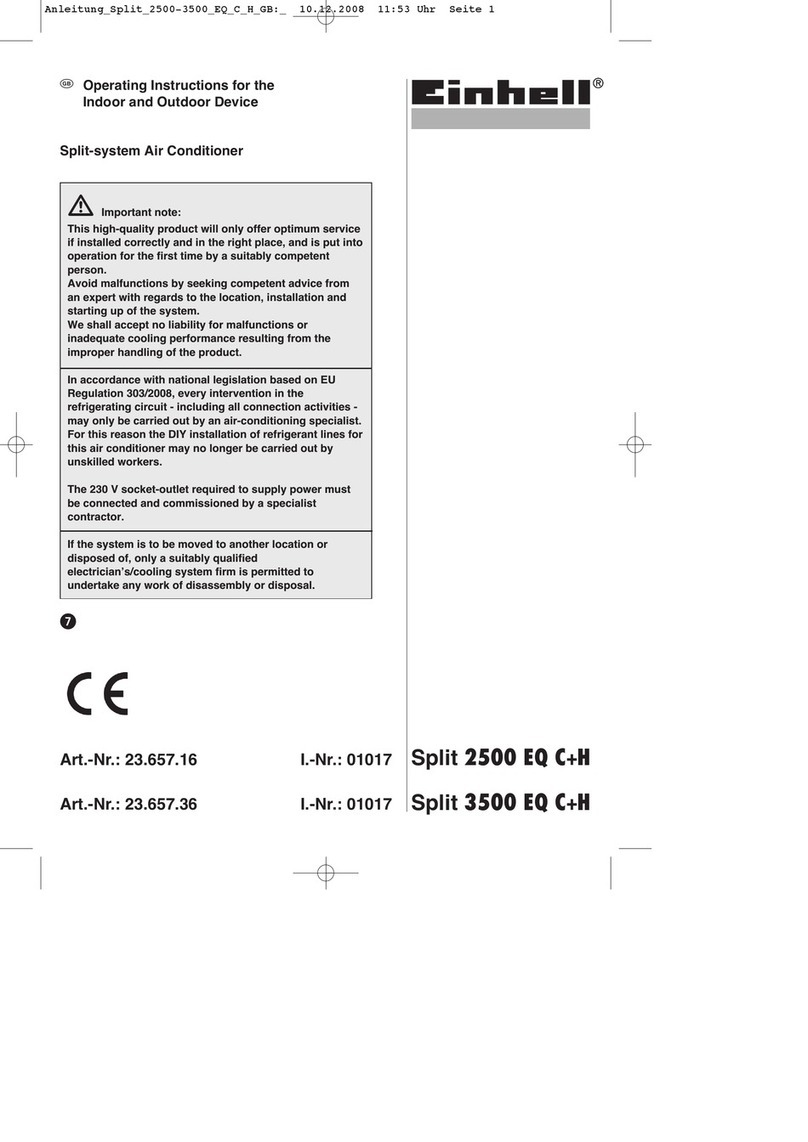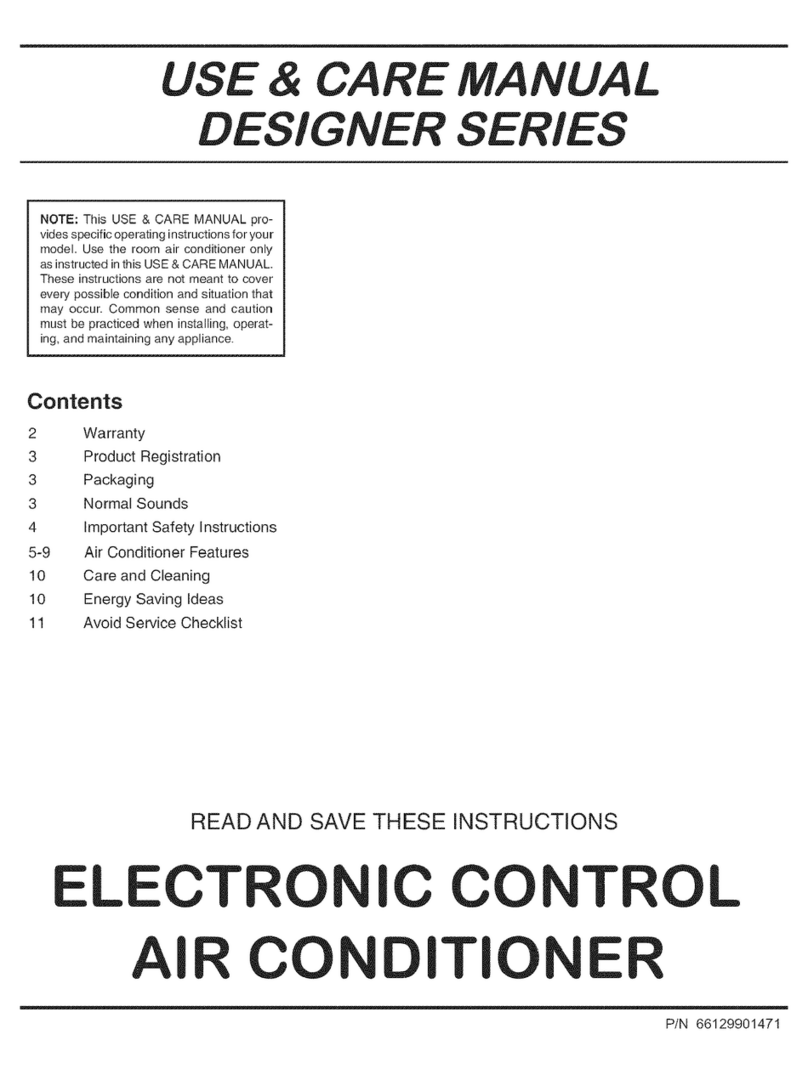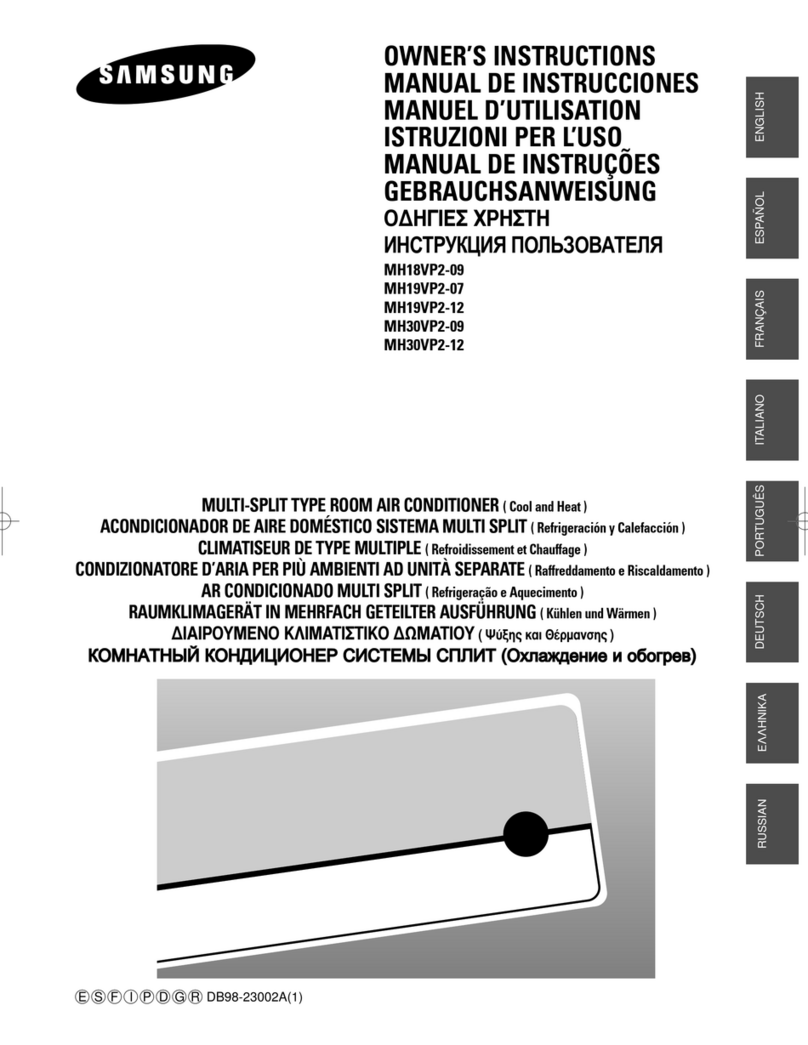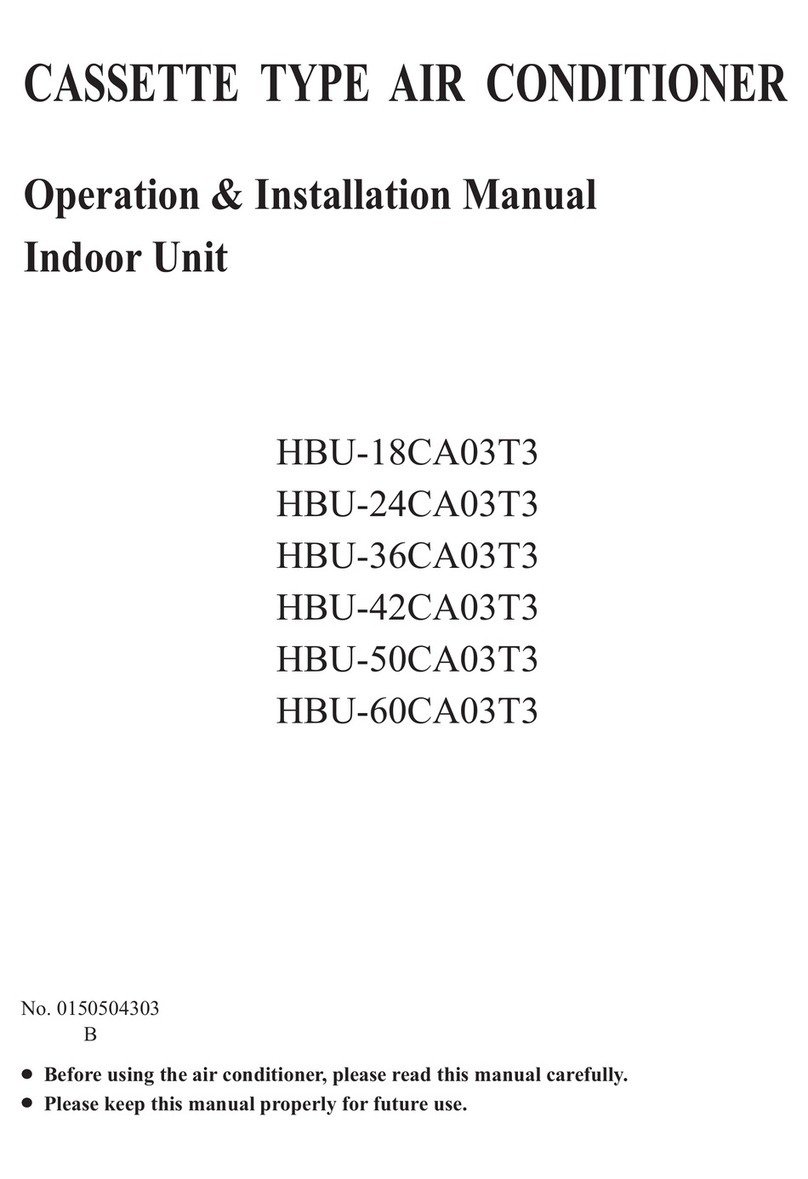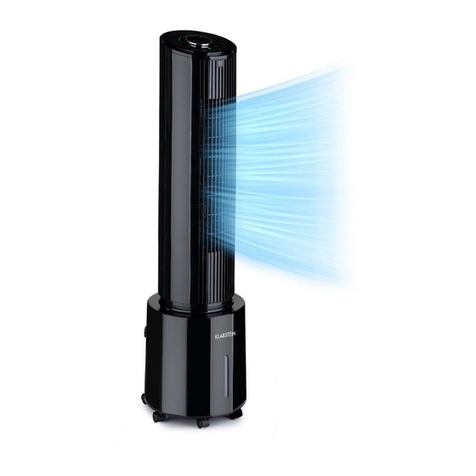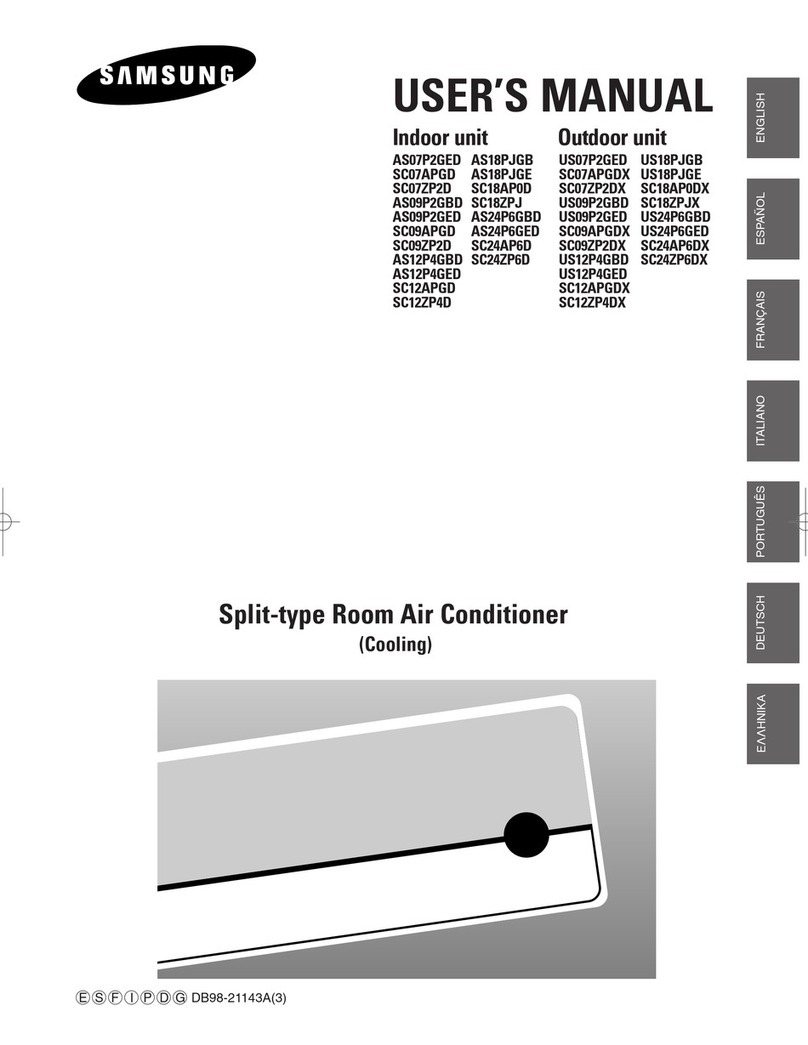LCT ACT-VCC-3000 User manual

ACT-VCC-3000 DC Cabinet Air Conditioner
User Manual
Read this manual carefully before installation and use.

Rev A
(ACT-VCC-3000-DC)
2
Summary
This manual describes the ACT-VCC-3000 DC Air Conditioner and includes the product description, working
principles, wiring diagrams, operating instructions, routine maintenance, troubleshooting, and technical
specifications of this model.
Table of Contents
Summary ......................................................................................................................................... 2
1. Instructions................................................................................. 3
2. Product Overview............................................................................ 3
2.1 Product Dimensions.................................................................................................................. 3
2.2 Application Notes...................................................................................................................... 4
2.3 Working Principles.................................................................................................................... 4
2.4 Product features........................................................................................................................ 4
2.5 Technical Specifications ........................................................................................................... 5
2.6 Air Circulation and Remote Mounting ...................................................................................... 5
2.7 Operation of the Unit................................................................................................................. 6
2.8 Condensate Handling................................................................................................................ 6
2.9 LED Display Parameter setting guide: ..................................................................................... 7
2.10 Alarm and fault management.................................................................................................. 7
3. Packaging and Shipping...................................................................... 8
4. Unpacking and Acceptance ................................................................... 9
5. Installation.................................................................................. 9
5.1 Physical Installation.................................................................................................................. 9
5.2 Electrical Connection.............................................................................................................. 10
6. Running and Testing ........................................................................ 13
6.1 Pre-operational checks ........................................................................................................... 13
6.2 Operating the Unit ................................................................................................................... 13
6.3 LED display manual ................................................................................................................ 13
7. Maintenance and Warranty................................................................... 15
7.1 Product maintenance.............................................................................................................. 15
7.2 Service and Repair .................................................................................................................. 17

Rev A
(ACT-VCC-3000-DC)
3
1. Instructions
This manual is written for: ACT-VCC-3000-DC
•Be sure to read this manual carefully before installing or operating the unit.
•To be covered by ACT’s warranty and access normal warranty service, the user(s) must comply with all local and
industry standards, as well as with the instructions in this User Manual.
2. Product Overview
The ACT-VCC-3000-DC Air Conditioner is an enclosure cooling device intended for applications where the internal air
of a sealed electrical enclosure must be cooled or maintained at a particular temperature. This manual will provide an
overview of the product including:
•Recommended uses
•Product nameplates
•Operating principles
•Product features
•Product composition
•Technical specifications
•Usage within a ducted design
•Control logic
•Communication protocols and user parameters
•Alarm options
•Troubleshooting
This product should be used strictly within accordance and with the relevant provisions of this manual.
2.1 Product Dimensions
Figure 2.1 Product dimensions

Rev A
(ACT-VCC-3000-DC)
4
2.2 Application Notes
This product is intended for use in industrial equipment applications that utilize a 48V DC
power supply. The purpose of its installation is to control cabinet temperature between 20
to 45℃; keeping within this range will ensure that all thermal sensors operate as intended.
Safety and Use Instructions:
oTransport the unit in an upright position
oDo not store in a high temperature, high humidity environment (<70℃, <95%).
oIf the unit will not be in use for a long period, disconnect the main supply power
2.3 Working Principles
•The Air Conditioner uses a standard vapor compression cycle
oThe main parts of the cooling system include: compressor, condenser, expansion valve, evaporator,
internal fan, and external fan
•Principle of refrigeration: The compressor compresses warm, low-pressure vapor into hot, high-pressure vapor.
This hot high-pressure vapor travelsthrough a condenser whereit dissipates heat tothe environment. The high-
pressure condensate then flows through an expansion valve which reduces the fluid’s pressure and partially
vaporizes the fluid. The expansion and partial vaporization cool the fluid (liquid and vapor mixture), which
allows the remaining liquid to vaporize and cool the air flowing through the evaporator.
•The air internal to the cabinet is circulated through the evaporator to be cooled to the desired temperature
•Air outside of the cabinet flows through the condenser and is used to condense the hot vapor in the
refrigeration cycle.
•Air outside of the cabinet never mixes with the air internal to the cabinet
2.4 Product features
This product isdesigned with all DCdriven componentssuch asfansand the compressor. This product has thefollowing
features:
•Power supply voltage range: 42~60 VDC
•DC units can be up to 50% more efficient than comparable AC units
•DC motor speed control provides low noise operation and low energy consumption
•R134a refrigerant
Manufacturer is not responsible for damage caused by operation outside of designated
intended use. Warranty is void if the following instructions are not followed:

Rev A
(ACT-VCC-3000-DC)
5
2.5 Technical Specifications
Table 2.1 Technical Specifications
Note: Parameters will be subject to the latest specification
2.6 Air Circulation and Remote Mounting
Internal circulation and external circulation of the air is shown in Figure 2.3. Ducting and a separating plate are
not required for enclosure mounting applications. If the unit is to be mounted remotely to cool an enclosure,
ductwork and a separting plate must be used as shown in Figure 2.3. Ductwork should be made as short as
possible to minimize the impact on the performance of the unit. Any additional pressure drop incurred by the fans
will reduce the performance of the unit. Be prepared to oversize the cooling unit accordingly. Any grills or filters
added to the unit or to accompanying ductwork will also result in reduced potential cooling from the unit.
Figure 2.3: Cabinet air circulation

Rev A
(ACT-VCC-3000-DC)
6
2.7 Operation of the Unit
When the unit is turned on, it will perform a self-test before starting standard operation. If any faults are detected
during the self-test, the system goes into the ‘fault’ mode; an alarm will be triggered and an error code will be shown
on the LED display to alert the user. If there is no fault after the self-test process, the system will automatically begin
normal operation.
•The self-test procedure is as follows:
1. Test of the internal fan;
2. Test of the internal temperature sensor;
3. Test of the internal fan;
4. Test of the compressor.
•The normal operating mode includes standby mode and active cooling mode:
oStandby mode: If the air temperature is lower than the air conditioner set point, the unit will remain in a
standby mode, where only the internal fan runs at its lowest speed.
oActive Cooling mode: If the air temperature is greater than the setpoint temperature, the unit will run on
normal cooling mode to achieve the setpoint temperature.
2.8 Condensate Handling
During normal operation in a humid environment, the unit may produce condensate on the evaporator coil inside of the
casing. A condensate drain port is provided on the bottom of the unit as shown in Figure2.4. Condensate will naturally
flow out of this port under normal operating conditions. If it is not permissible for certain applications for water to drain
directly out of this port, a fitting is provided for connection of an appropriately sized drain tube to relocate condensate
to an available drain. Most applications will produce less than 150 mL/hr of condensate and drain tubes should be
sized accordingly.
Figure 2.4: Bottom View of unit, showing Condensate drain port

Rev A
(ACT-VCC-3000-DC)
7
2.9 LED Display Parameter setting guide:
Table 2.2: Parameter setting range
Items
code
Item name
Default
Value
Value Range
Unit
P01
Communication address for master/slave
unit setting
1 - slave
unit
1 –slave unit; 2 –master unit,
/
P02
Compressor starting temperature
35
18~50
℃
P03
Hysteresis value for compressor start/stop
5
1~5
℃
P04
High-temperature alarming value
58
35~100
℃
P05
Low temperature alarming value
-42
-42~25
℃
P06
Heater starting temperature value*
5
-45~15
℃
P07
Hysteresis value for heating start/stop*
10
5~20
℃
P08
External input signal type definition
2
0: disable; 1: NO type; 2: NC type
P09
Master/Slave function definition
0
0 –disable 1 - enable
P10
Master/slave switching period for each unit
12 hours
0~72 hours
P97
Return to factory setting
/
Pressing the “S” key will return the
product to default factory settings
*Heating functions are optional and not included on all units.
The above parameters can be accessed through RS485 communication if necessary. For questions, please contact
ACT’s sales staff at 717-295-6061.
2.10 Alarm and fault management
During normal operation, the LED displays the return air temperature leaving the air conditioner. An alarm signal will
alert the user to an error and the alarm code error message will be displayed alternately with the return air
temperature. Alarm codes are as follows:
Table:2.3 Error Code meanings
Error Code
Code Definition
E01
Internal fan No.1 fault warning
E02
Internal fan No.2 fault warning
E03
External fan No.1 fault warning
E04
External fan No.2 fault warning
E05
Compression fault warning
E06
Communication fault warning
E07
High-temperature warning

Rev A
(ACT-VCC-3000-DC)
8
3. Packaging and Shipping
•The Air Conditioner should be packaged in a wooden crate, as in figure 4.1 (1 pcs/box or 6 pcs/box), with
foam protection surrounding the unit.
•When transporting this Air Conditioner, please pay attention to the following:
Figure 3.1 Packaging marking
•During Handling or transport, the Air Conditioner must be upright. Do not place flat or tilted.
•The Air Conditioner is a precision instrument and should be handled with care. Any secondary shipping must
be capable of protecting the unit from damage.
E08
Low-temperature warning
E09
DC Power overvoltage warning
E10
DC Power undervoltage warning
E11
Refrigerant circuit pressure is too high warning
E12
Refrigerant circuit pressure is too low warning
E13*
Heater current overload warning
E14*
Heater current too low warning
E15
Return air temperature sensor fail warning
E16
Condenser air temperature sensor fail warning
E17
Ambient air temperature sensor fail warning
E18
Control signal input: on / off dry-switch type
E21*
AC voltage too high warning
E22*
AC voltage too low warning
E23*
Compressor Current Overload warning
E24*
Compressor Current Underload warning
E25
Communication Loss warning for master/slave pairs
*Note: Gray text items are not applicable for all products.

Rev A
(ACT-VCC-3000-DC)
9
4. Unpacking and Acceptance
•Make sure the package is upright as shown in Figure 4.1 before you open the package,
Figure 4.1 packaging
•Please check that the packing straps are unbroken and that the wooden box is undamaged, not deformed or
wet.
•Use scissors or a knife to dismantle the packing belt, then open the wooden box.
•After opening the package, please check the contents against the packing list.
5. Installation
5.1 Physical Installation
Please follow the below diagram, figure, and instructions for installation:
Figure 5.1 Installation diagram

Rev A
(ACT-VCC-3000-DC)
10
Figure 5.2 Dimensions for cut-out in enclosure door
Installation steps:
1. Mark the cabinet with the cut-out dimensions according to Figure 5.2
2. Cut out the shaded area
3. Remove the product from the shipping crate with care
4. Install the Air Conditioner on the cabinet as shown in Figure 5.1
5. The mechanical portion of the installation is now finished. Adhere to
the “Install Checklist.”
Install Checklist
✓The ambient air must be under 55℃, and the humidity under 95%.
✓Make sure that the product is installed within 3° of plumb level, relative
to the vertical direction
✓Make sure that the cabinet is well-sealed (using the supplied gasket)
✓Do not turn the unit on immediately after finishing the installation; the
unit must remain standing vertically for more than 30 minutes before being
turned on to allow the compressor oil to drain back to the compressor.
✓Complete wiring 5.2 and pre-operational 6.1 checks before turning -on
the unit.
5.2 Electrical Connection
**Electrical wiring should be performed, only by skilled technicians, before powering
on the product**
The power supply must be in accordance with the technical specifications of the unit. Power supply cable sizes and
circuit breaker sizes are recommended below:
Current documentation, cut out templates, DXF and Step files can also be found on our website
at https://www.1-act.com/enclosure-cooling/resources/enclosure-cooling-dxf-and-step-files/

Rev A
(ACT-VCC-3000-DC)
11
Table 5.1: Wiring Requirements
MODEL
ACT-VCC-3000-DC
Power supply
- 48 VDC* ( GND/RTN: positive, -48: negative)
Power supply range
-42 VDC ~ - 60 VDC.
DC power supply source capacity
≥30Amps @ 48VDC
Main power supply cable size
≥10AWG (UL 1015)
Voltage loss along power supply cable
from the power source to the unit
≤1.0V
Circuit breaker size
≥30 Amps
Notes:
•A circuit breaker is required before connecting the power supply, refer to the above table for size
•All wires must be properly torqued to the relevant terminals
•All national wiring regulations and local electrical codes should be followed, based upon instalation location.
Safety Reminder notes before running the product:
✓Don’t touch the product with wet hands
✓Disconnect power to the unit before carrying out cleaning, maintenance, or disassembly
✓Don’t touch the inlet and outlet of the unit with fingers or tools, to avoid damaging the machinery
✓If the unit is functioning abnormally (such as abnormal sounds, smoking, not cooling), turn the unit off immediately
and schedule a professional inspection.

Rev A
(ACT-VCC-3000-DC)
12
Figure 5.3 System wiring diagram
J17
J3
J16
J5
J6
J14
U V W
-48V
RTN
J9 J13
J12
J15
J7 J8
RS485
+
+
-
-
SPI Com
J2
J1
ExtfanIntfan
PE
MDYT V30
Inter Fan
Exter Fan
INT . Temp . Sens or
Con d. Tem p. Sen sor
Display
Compressor
CTRL
NO
COM
NC
T/R+
T/R-
J2
R TN -IN
J1
-48V -IN
J4
J3
- 48V - OU T
R TN -OU T
-48V
RTN

Rev A
(ACT-VCC-3000-DC)
13
6. Running and Testing
6.1 Pre-operational checks
After Air Conditioner is installed and the electrical connection is completed, please complete the following checklist:
Table 6.1 Pre-operational checks
Steps
✓
Checking items
1
Ensure all screws are torqued to appropriate values
2
Ensure that there is enough space around the internal and external air ducts of the air conditioner. Per Figure 5.1
3
Ensure that the power line connects to the right polarity; Alarm signal cables are connected correctly
4
Use a multimeter to check the supply voltage, that the power supply voltage is normal and consistent with the
requirements on the nameplate.
6.2 Operating the Unit
Apply power to the unit. The product will first run a self-test program, and then the unit will run normally. (Self-test:
Refer to “Section 2.7: Operation”)
•If there is any trouble during the self-test, the alarm will be triggered: the LED Display will flash with alarm
error codes, Refer to “Table:2.3 Error Code meanings”
•If there is no fault after the self-test process, the system will go into normal operation automatically. (Normal
mode: includes standby operation and active cooling mode)
6.3 LED display manual
The interface of the LED display is shown in Figure 6.2
Figure 6.1 LED Display:
When the Air Conditioner is running, if there is abnormal noise or vibration, turn the power off.

Rev A
(ACT-VCC-3000-DC)
14
Figure 6.2 LED Display faceplate
Table 6.2 Definition of the symbols
Indicator Icon
Definition
Is lit
Is blinking
Parameter setting
Under setting status
Self-test status
*Heating status
*Heater is running
*Heater has failed when off
Cooling
Compressor is running
Compressor has failed when off
External fan
External fan is running
External fan has failed when off
---
---
---
Alarm / Warning
Alarm / Warning
---
*Not all options are available for all units
Setting Display Parameters:
Press the "M" key for 5 seconds, causing the system to enter into parameter setting mode. The display will show
the “Pxx” code.
•Use arrow "" keys to choose the desired item.
•Press the "S" button to select. The display will show the selected item’s current parameter values; use
arrow "" keys to adjust the value and press the "S” button to lock in that value.
oAt this time, a four-digit password input interface will be shown as “0000”; please key in the
customer default password “1234” and use the "S" key to confirm each digit. Once the correct
password is entered, the system will save the new parameter value and display code “End”, then
return to normal display status automatically.
Note:
•While in the parameter setting mode, press the "M" key to exit..
•If no key is touched within 30 seconds, the system will return to normal mode automatically.

Rev A
(ACT-VCC-3000-DC)
15
7. Maintenance and Warranty
7.1 Product maintenance
7.1.1 Tools needed
Table 7.1 Maintenance tools
Number
Tools
1
Multimeter
2
Phillips screwdriver
3
Slotted screwdriver
7.1.2 Spare parts list
Table 7.2 Spare parts list
No.
Spare part PN
Spare part name
Spare part model
Quantity
1
31.001
Internal/external fan
225DC FAN
2
3
41.011
Main control board
MDYT V30
1
7.1.3 Routine Maintenance
Table 7.3 Routine maintenance
NUM.
Check items
Check methods
Solution
1
Power line
attachment
1. Turn off the supply power
2. Tug on the power line with moderate force and check
whether the line is loosening from its terminals
3. Tighten the screws on the power cord terminals
with a screwdriver, watch whether the screw is
tightening or stripped
If a power line is loose or loosening,
retorque the attachment terminals or
replace the cable if damaged.
2
Voltage
Stability
Use the multimeter to measure the Air Conditioner input
voltage, in order to gauge whether the voltage is within
normal range.
If the voltage is not within the normal
range, please turn off the power
supply immediately. Do not power-on
the Air Conditioner until the supply
voltage within normal range.
3
Attachment
bolt torque
Check the torque on all attachment bolts to ensure that
the unit is still secured to the enclosure properly.
Retorque any bolts as required.
4
Cooling
Power on the switch and check whether the self-test is
correct. If it is correct, then the monitor will display
compressor current as self-test program.
While self-testing, if there is
abnormal noise or vibration, please
cut power off immediately and notify
a professional to inspect.
If alarm triggers while self-testing,
please process as table7.3
5
Fan Dust
Accumulation
Check for dust build-up around the fan blades on both the
internal and external fans.
If significant dust has accumnulated,
use compressed air to blow dust off
of fan blades until clean.

Rev A
(ACT-VCC-3000-DC)
16
7.1.4 Alarm code and Processing method
Table 7.4 Alarm information
Code Name
Principle
Process Method
Return air temperature
sensor alarm
Return air temperature sensor
has a short circuit or open circuit.
Check whether the return air temperature sensor wire has
been damaged or if a short circuit or open circuit is present.
Compressor current is
too low
Compressor current is not
within the normal range.
1. Check whether the compressor power line is loose
2. Compressor fault, contact professional maintenance or
ACT
Compressor over-
current
Compressor current is not
within the normal range.
1. Check whether the condenser is dirty or blocked
2. Compressor fault: contact professional maintenance or
ACT
Internal fan alarm
The internal fan current is not
within the normal range.
Check whether the internal fan electrical connections are loose.
External fan alarm
The external fan current is not
within the normal range.
Check whether the external fan electrical connections are loose.
High-temperature alarm
The cabinet temperature is higher
than the set point.
Reduce electrical power in cabinet and open the cabinet door until
the alarm stops.
Supply voltage overload
The compressor current is not
within the normal range.
Turn off the power supply immediately. Use a multimeter to
measure the voltage, do not power-on the switch until the power
supply is within the normal range.
7.1.5 Other fault analysis and processing
Table 7.5 other fault analysis and processing
Fault state
Analysis of the reasons
Solutions
Powered-on unit but the
cabinet temperature is too
high and the Air Conditioner
is not working
1. Power failure or no power
2. The cooling set temperature is higher
than the cabinet temperature
3. System fault
1. Check the power supply and the electric circuit
2. Set cooling temperature setpoint according to
needs
3. Contact ACT
The Air Conditioner is
running but the cooling
effect is not adequate
1. The cooling capacity of the Air
Conditioner is not matched to the
thermal load.
2. The ambient temperature is too high
3. Other system faults
1. Add additional air conditioner to match load, or
select a properly sized unit for the thermal load
2. Ensure the machine is used in the correct range
3. Contact professional maintenance
The Air Conditioner is
stopping suddenly, and the
electrical system is normal
1. The cabinet temperature is greater
than, or equal to, the cooling set
temperature.
2. Other system faults
1. Set cooling temperature setpoint according to
needs
2. Contact ACT

Rev A
(ACT-VCC-3000-DC)
17
7.2 Service and Repair
Warranty period: 1-year limited warranty
Warranty Section from ACT’s PURCHASE ORDER TERMS AND CONDITIONS
•Buyer’s Property. All drawings, tools, fixtures, materials and other items supplied or paid for by Buyer
shall be and remain the property of Buyer. All such items shall be used only in the performance of work
under this Order unless Buyer consents otherwise in writing. Seller shall have the obligation to maintain
any and all property furnished by Buyer to Seller and shall be responsible for all loss or damage to said
property except for normal wear and tear.
•Warranty. Seller warrants that all Goods furnished under this Order shall conform to all specifications
and appropriate standards, will be new, and will be free from defects in material or workmanship. Seller
warrants that all Goods furnished hereunder will be merchantable, and will be safe and appropriate for
the purpose for which Goods of that kind are normally used. If Seller knows or has reason to know the
particular purpose for which Buyer intends to use the Goods, Seller warrants that such Goods will be fit
for such particular purpose. Inspection, test, acceptance or use of Goods furnished hereunder shall not
affect Seller’s obligations under this warranty, and such warranty shall survive inspection, test,
acceptance and use. Seller’s warranty shall run to Buyer, its successors, assigns and customers, and
users of products sold by Buyer. Seller agrees to replace or correct defects of any Goods not
conforming to the foregoing warranty promptly, without expense to Buyer, when notified of such
nonconformity by Buyer, provided that Buyer elects to provide Seller with an opportunity to do so. In the
event of failure of Seller to correct defects in or replace nonconforming Goods, Buyer, after reasonable
notice to Seller, may make such corrections or replace such Goods and charge Seller for the costs
incurred by Buyer in doing so. Seller shall be liable for and save Buyer harmless from any loss, damage,
or expense whatsoever that Buyer may suffer from a breach of these warranties.
•Inspection and Acceptance. All Goods are subject to Buyer’s inspection, testing and approval, both at
Seller’s facility and Buyer’s point of destination. Buyer reserves the right to reject and refuse acceptance
of any Goods which do not comply with all the terms of this Order. Acceptance, payment, use, or resale
of Goods by Buyer shall not release Seller of any of Seller’s obligations, representations, or warranties
hereunder. Payment for any Goods shall not be deemed an acceptance hereof.
Please see ACT’s current full Terms & Conditions: https://www.1-act.com/termsandconditions/
Disclaimer
The warranty is limited to the delivered product(s) and ACT is not responsible for any loss that may be derived
by equipment failure.

Rev A
(ACT-VCC-3000-DC)
18
Questions or Comments?
ACT Quality Department: [email protected]m or call 717-295-6061 to reach the Sales staff for assistance on
custom orders.
Table of contents

